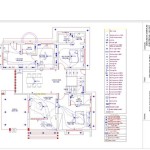Wooden Outdoor Cat Shelter Plans
Outdoor cats, whether feral, stray, or owned pets with outdoor access, often require shelter from the elements. A well-designed outdoor cat shelter can provide protection from rain, wind, snow, and extreme temperatures. Building a wooden shelter offers a durable and customizable solution. This article explores various wooden outdoor cat shelter plans and important considerations for their construction.
Several factors influence the choice of plan. Climate plays a crucial role. Shelters in colder climates require more insulation and potentially a smaller entrance to retain heat. Conversely, shelters in warmer climates benefit from increased ventilation. The anticipated number of cats using the shelter also dictates the necessary size. Available construction skills and budget further refine the options.
A basic A-frame shelter is a popular choice for its simplicity. This design requires two angled pieces of wood for the roof and a rectangular base. The angled roof allows rain and snow to run off, preventing accumulation. The base provides a platform to keep the cats off the ground. This design can be adapted to include a back panel for added protection from wind.
A more advanced design incorporates a double-chambered system. This configuration typically consists of an outer chamber and a smaller, insulated inner chamber. The outer chamber acts as a buffer against wind and rain, while the inner chamber provides a warm, dry space for the cats. This design is particularly beneficial in colder climates.
Insulation is a critical consideration for shelters in regions with cold winters. Styrofoam insulation boards can be easily cut to fit and placed within the walls and roof of the shelter. Reflective insulation, such as foil-backed bubble wrap, offers an additional layer of protection by reflecting radiant heat back into the shelter.
Elevated shelters provide additional protection against flooding and ground-dwelling predators. These shelters can be built on a raised platform supported by concrete blocks or wooden legs. The platform should be sturdy and level to ensure the stability of the shelter.
The choice of wood impacts the shelter’s durability and longevity. Cedar and redwood are naturally weather-resistant and insect-repellent, making them ideal choices. Pressure-treated lumber offers a more affordable option but requires careful sealing to prevent chemical leaching. Plywood can be used for the walls and roof, but it is less durable than solid wood and requires thorough waterproofing.
Proper ventilation is essential to prevent moisture buildup inside the shelter. Small vents can be incorporated into the walls or near the roof peak. These vents allow for air circulation while minimizing drafts. Positioning the shelter in a location protected from prevailing winds also helps to reduce drafts.
The entrance to the shelter should be appropriately sized. A smaller entrance helps to retain heat and deter larger predators. However, the entrance should be large enough for the cats to comfortably enter and exit. A flexible flap made from heavy-duty plastic or rubber can be added to the entrance to further protect against wind and rain.
Exterior features can enhance the shelter’s functionality and aesthetics. A sloped roof covered with asphalt shingles provides superior weather protection. An overhang at the entrance further deflects rain and snow. Painting the exterior with a weather-resistant paint extends the life of the wood and provides a visually appealing finish.
Careful planning and construction are crucial for creating a safe and effective outdoor cat shelter. Choosing appropriate materials, incorporating insulation, and ensuring proper ventilation contribute to the shelter’s overall performance. Considering the specific needs of the cats and the local climate is essential for building a shelter that provides optimal protection.
Online resources offer a wealth of free and paid wooden outdoor cat shelter plans. These plans often include detailed instructions, material lists, and diagrams. Modifying existing plans to meet specific needs is also a viable option. Consulting with local animal shelters or rescue organizations can provide further guidance on appropriate shelter design and construction.
Regular maintenance is necessary to ensure the shelter remains in good condition. Inspecting the shelter for damage, cleaning it regularly, and replacing worn-out components prolong its lifespan. Maintaining the shelter not only provides ongoing protection for the cats but also promotes their health and well-being.
Building a wooden outdoor cat shelter offers a tangible way to improve the lives of outdoor cats. By carefully considering the design, materials, and construction techniques, a durable and effective shelter can be created, providing a haven from the elements for years to come.

Image Result For Diy Outdoor Cat Shelter House Plans

15 Gorgeous Cat House Ideas All Made Of Wood Wooden Plans Diy

Outdoor Cat House Plans Myoutdoorplans

15 Diy Outdoor Cat House Plans For Feline Shelter

29 Diy Wooden Outdoor Cat House Plans You Can Make Today With Pictures Hepper

Outdoor Cat House Plans Howtospecialist How To Build Step By Diy

15 Diy Outdoor Cat House Plans For Feline Shelter

Diy Cat House Simply Designing With Ashley

Easy To Build Diy Outdoor Pet House For Cats Or Dogs

Most Fabulous And Splendid Wooden Cat House Designs In 2024 Outside Feral Diy








